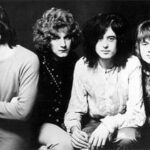The use of a music montage in feature length films has been employed with great frequency over the last thirty years. Usually such a sequence is okay. Sometimes it is gut wrenchingly awful and on rare instances it is fantastic.
There are a couple of criteria for making a music montage work. First, the song that is used must be a good one. Tired, overplayed songs will take the viewer to a different place, perhaps where they remember that song in their own life. The music video inside the film should advance the plot. At the end of it, we should be aware of something that we weren’t aware of before the song started. Finally, it should fit the movie. I’m sick of seeing music montages in dramas.
The best music montage in a movie was in one of Nicholas Cage’s first films, Valley Girl. Cage plays a dude from Hollywood and he woos a babe from the valley. Set to the timeless classic “I Melt With You” by Modern English, director Martha Coolidge takes us along on the dates between the punker and the hottie. We see them at various locales – eateries, concerts, etc – and they are having a good time. Great song (I actually here that song more often now on the radio than I did when it was first released) and we learn that the main characters are falling for each other, despite their differences. And whatever happened to the valley girl, Deborah Foreman?
Julia Roberts has made a lot of movies and there have been music videos in many of them. Let’s look at three for examples of poor, acceptable and outstanding use of a video in a movie.
Sleeping with the Enemy
Roberts portrays a woman who has been physically and emotionally abused by her husband. She fakes her own death and flees him. In her new life, she meets the drama teacher at the local college. In a scene set to “Brown Eyed Girl” by Van Morrison, we see Roberts trying on various costumes as given to her by her new love interest. This doesn’t work for a number of reasons. First, the song is great but is too well known to be effective in this usage. Also, we don’t learn anything other than Roberts looks good wearing a series of goofy costumes. The plot isn’t advanced at all. Finally, it doesn’t fit in the movie. She fled an abusive man who winds up killing her mother and eventually being shot and killed himself by Roberts. I don’t know what director Joseph Ruben was thinking.
Pretty Woman
Roberts is a hooker with a heart of gold. After being picked up by Richard Gere, he gives her money so she can buy nice clothes and be his escort for a week. However, snooty storekeepers refuse to serve her while she’s dressed like a prostitute. In a hilarious scene, Gere accompanies her and has boutique manager Larry Miller kiss up to her while she buys everything in site. To the tune of Roy Orbison’s “Pretty Woman”, we watch Roberts try on all sorts of new outfits. This one is okay. The song is too well known and the plot isn’t advanced to any appreciable degree. But it fits the movie and the scene with Larry Miller is a classic.
Notting Hill
Roberts plays a movie star who falls for commoner Hugh Grant. Roberts, however, abruptly and without warning, abandons Grant, leaving him out in the cold. The music video in this film shows Grant walking down the street near his flat and used book shop. He passes by familiar haunts and shops while “Ain’t No Sunshine When She’s Gone” by Bill Withers is played. Director Roger Michell does a great job showing Grant walking slowly as the seasons change around him from Summer to Fall to Winter to Spring. Great song. Withers is one my favorites and isn’t overly familiar to many people. The plot is advanced as we see Grant is upset and that some time has passed.
Directors who are looking to use this device in a film would be wise to learn from the examples set in Valley Girl and Notting Hill.



